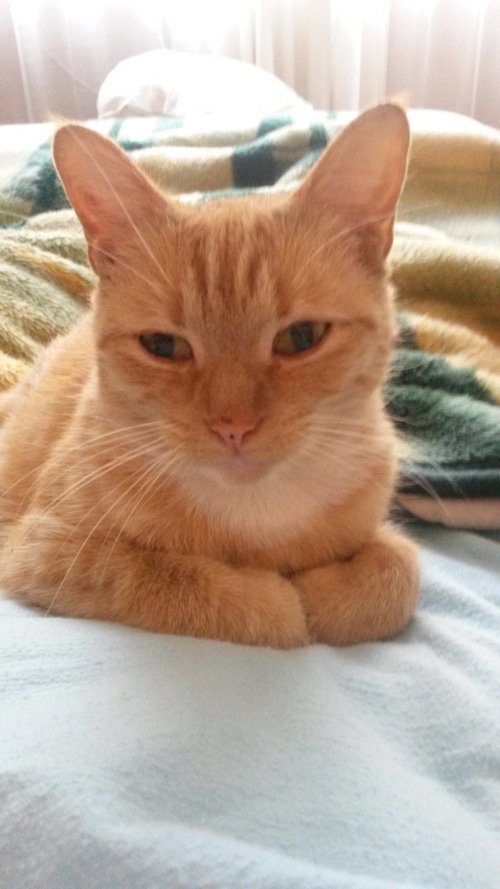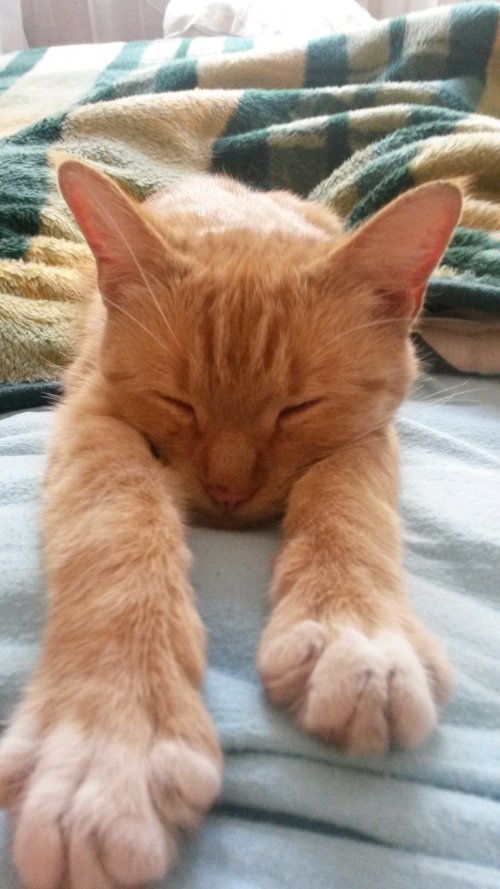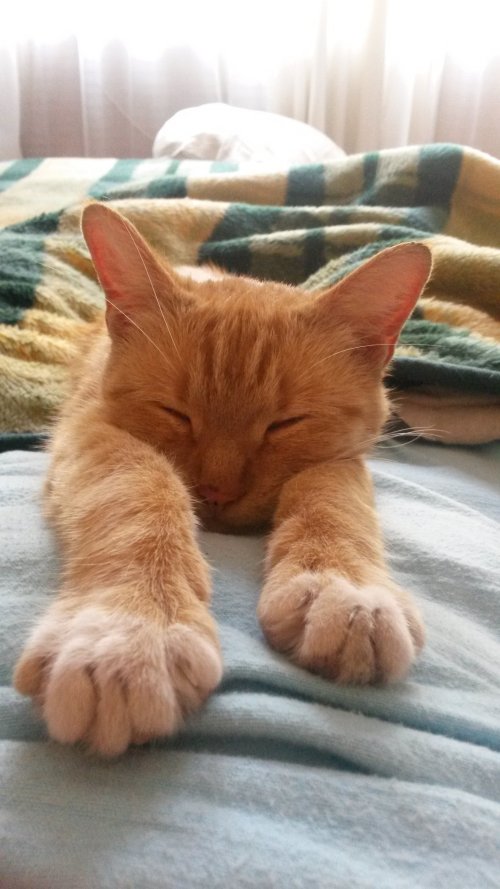|
Archived Newsletters 2012-11-02 WHAT IS CLICKER TRAINING? PSYCHOLOGY DEFINITIONS: Operant Conditioning
Operant conditioning is so named because the subject 'operates' on the environment. An early theory of operant conditioning, proposed by Edward Thorndike, used the name instrumental learning because the response is 'instrumental' in obtaining the reward. (Both operant and classical conditioning are also called S-R learning because a stimulus, S, has been paired with a response, R.) Stimulus Generalization Stimulus generalization is the tendency of a subject to respond to a stimulus or a group of stimuli similar but not identical to the original CS. For example, a subject may initially make the desired response when exposed to any sound (that is, to a generalized stimulus) rather than making such a response only to a specific sound. Such generalization can occur in both classical and operant conditioning (if a CS is used). However, a subject can be taught to discriminate among sounds and to respond only to a specific sound. Extinction In operant conditioning, extinction (the cessation of a particular response) occurs when a response no longer results in reinforcement; it occurs in classical conditioning, as discussed earlier, when the CS no longer produces a CR. One way to measure the strength of the learning that has occurred (called response strength) is to see how many unreinforced trials must occur before extinction takes place, (called resistance to extinction). Sometimes, in both classical and operant conditioning, spontaneous recovery occurs; that is, the response in question begins again even though there has been no reinforcement (for example, a rat presses the bar even though the action no longer produces a food pellet). Influencing Learning and Performance It is important to distinguish between learning (including conditioning) and performance. The phenomena of cognitive maps and of latent learning both demonstrate that something may be learned but not shown until later. Factors that influence learning. Several factors may affect learning. Learning generally increases with increased amount of practice or training. Practice alone, however, is not enough. Classical conditioning requires an unconditioned stimulus (UCS); operant conditioning requires reinforcement (positive or negative). Within limits, the amount of reward can affect learning, although the relationship between the two is complex, and the subject has been studied extensively. Surprisingly, an increase in reward can sometimes cause a decrease in response. Delay of reward is also much studied. In general, only a short time should elapse between a response and its reinforcement. In partial reinforcement, a subject is not rewarded every time for making a response. In general, partial reinforcement leads to a greater persistence in behavior than does continuous reinforcement. (Slot-machine players can attest to this fact.) Interstimulus time, the time between presentations of a given stimulus, can also be important in both classical and operant conditioning. Optimal conditions can be determined for a particular situation. Factors that influence performance. Since learning is a relatively permanent change in behavior that occurs as a result of experience, experimenters must be certain that factors other than learning have not influenced the responses being studied and be alert to what those factors might be. Several factors that influence performance but not necessarily learning include the following. Variations in level of motivation can influence performance. For example, if two rats have been through the same conditioning process but one of them is denied food until it is very hungry, that rat may press a bar that produces a food pellet with more vigor than the less-hungry rat. The vigor of the response, in this case, does not reflect different degrees of learning 'both rats have learned the bar-pressing response' but rather different levels of motivation. Stimulus intensity may influence performance as well. But while a more intense CS might produce a stronger conditioned response (CR), the increased vigor of the response does not necessarily, and in general does not, indicate greater learning. If extreme effort must be used in a response, for example in pressing a weighted bar, fatigue may affect a subject's performance. Intertrial intervals have also been shown to affect performance. Too many trials too quickly can result in decreased performance simply because of fatigue or boredom. Contingency Theory Contingency theorists argue that types of learning exist that are not explained by operant and classical conditioning. Contingency theory proposes that for learning to take place, a stimulus must provide the subject information about the likelihood that certain events will occur. Robert Rescorla demonstrated that the pairing of a conditioned stimulus (CS) and unconditioned stimulus (UCS) does not always produce learning and contended that it is necessary for the CS to signify a contingency. Learned helplessness. Learned helplessness, also demonstrated by Rescorla, results from situations in which no perceived connection (contingency) exists between a response and a reinforcer, suggesting to an individual that responses and outcomes are unrelated. When subjects' behavior has no effect upon reward, the result is apathy or unresponsiveness; they simply give up and no longer try. Martin Seligman also demonstrated that if individuals (both animal and human) believe they have no control in a situation, they exhibit learned helplessness, doing nothing and not trying to solve problems. Social Learning Theory Social learning theory proponents believe that much of our learning occurs through watching, often in social situations, what happens to other people. Observational learning. Observational learning, sometimes called modeling or in some instances vicarious learning, is a type of social learning. In Albert Bandura's famous experiment, one group of nursery school children observed an adult punch a Bobo clown doll, and one group did not. Later, those children who had observed the punching behavior were more likely to punch the Bobo doll (model the adult's punching behavior) when they were frustrated than were those who had not observed it. Observational learning occurs also through exposure to events and people in the media. One may decide, for example, to copy the clothes or behaviors of television personalities. This tendency is one reason that many object to excessive violence in television programs both for children and for adults. Behavior Modification The application of some of the principles of classical and operant conditioning to changing behavior is called behavior modification. Its major goal is to replace unacceptable responses with acceptable ones. Behavior modification is used in many situations, ranging from therapy to child rearing. Ignoring a child's temper tantrum but rewarding that child's polite behavior is an example of a behavior modification procedure. Cognitive Learning (S-S Learning) Cognitive learning involves learning a relationship between two stimuli and thus is also called S-S learning. Types of cognitive learning include latent learning and the formation of insights. Latent learning. Latent learning (sometimes called incidental learning) is learning without reinforcement and is not immediately demonstrated when it occurs. For example, if a student wants a coffee break, wonders where to go, and suddenly remembers a new coffee shop near campus, the student is demonstrating latent learning. E. C. Tolman, a well-known investigator of cognitive learning, suggested that organisms form cognitive maps of their environments, maps that can be used when needed. Insight. An insight is a new way to organize stimuli or a new approach to solving a problem. A student struggling with a mathematical problem who suddenly sees how to solve it without having been taught additional methods has had an insight. Wolfgang Köhler, a famous Gestalt psychologist, demonstrated that chimpanzees can solve problems using insight. Chimps placed in a cage, with bananas beyond their reach, learned that they could pile up boxes or attach one stick to another to reach and obtain the food. The chimps had not been reinforced for these specific behaviors but learned how to get the food through insight. Once insight has occurred, no further instruction or training is required. WHAT IS CLICKER TRAINING? What is Clicker Training PART 1 What is Clicker Training PART 2
Clicker Training is a respectful, scientific and yet fun method of training your dog (or any animal). It uses a positive approach by rewarding the behaviours you want rather than punishing the unwanted ones. It is based on the science of Operant Conditioning used in training marine mammals like dolphins. Karen Pryor, a marine mammal trainer, popularized the technique and the term Clicker Training and brought it to the world of dogs, cats, horses, birds and other small animals! Clicker Training is Fast, Easy and Fun! Whether for the average pet owner or for those who want more precision in their training, this might be the answer for you! If you have been looking for a method of training that doesn't use punishment or force, this might be the answer for you! We have Trainers who can either work with good manners for pets or use the clicker to perfect the Obedience Commands! Maybe you'd like to teach your dog tricks? Or just find a way to have some quality fun time with your pooch. Start now with Puppy Training! A combination of clicker & TTouch - there's no better way to start your puppy's learning! Puppy classes here HOW TO DO CLICKER TRAINING? Trainers use a toy clicker with a unique sound to mark the behaviour that they like. After they 'click', the dog receives a reward. This can be anything that the dog likes, from food to fetch to a walk. Food is a staple part of Clicker training, as it's easy to dispense and nearly always rewarding for the dog. (Don't worry, there are many tips for dogs who don't seem to be food motivated) Clicker Training relies on Positive Reinforcement to make it more likely the dog will repeat the desired behaviour in the future. It is unique in that: There is a step-by-step recipe to getting any behaviour and the tools used to get these behaviours are vast. The clicker is used as a marker signal for the animal to know when he has done something right. Rather like a camera taking a picture, marking the exact moment. Basically it's Get the Behaviour Mark the Behaviour Reward or Reinforce the Behaviour An example is if you want to teach your dog to sit. When he sits, you click. Then you give him a bit of a yummy treat. The click means, 'That behaviour is exactly what I want'! If you Click & Treat every time the dog sits, he quickly will understand that sitting is a very good thing indeed. You can then start to add the cue word 'Sit' before your dog sits so that the association starts to develop between the word and the behaviour. We at Tellington TTouch, South Africa believe that Clicker Training is eminently compatible with TTouch as both modalities are based on working with the animals with Respect, Co-operation and Understanding. They both are working towards getting the animals to Think for themselves and Communication on the highest level. There are a variety of ways to experience Clicker Training: Six Week Classes, which include Practicals as well as Learning Theory for those who want to understand the science behind how dogs learn. This is the best option for those wanting to further their knowledge of dog behaviour. Classes here Regular Weekly Classes for Fun. This includes basic training and is a good way to work with both beginner dogs and those more advanced. Puppy classes here Regular Weekly Classes for the Obedience Ring as well as Other Disciplines Classes here Private Consultations - any of the Trainers listed can help you with a private consultation. WHAT IS THIS THING CALLED CLICKER TRAINING? PART I 'Clicker training' is the popular term for the training or teaching method based on what we know about how living organisms learn. Research has shown that any creature - whether a dog, cat, dolphin, parrot, fish, horse, llama, or person - is more likely to learn and repeat actions that result in consequences it desires and enjoys. So clicker trainers provide consequences desired by their animal in exchange for actions or behaviors desired by their trainers. We call these consequences 'rewards' and the process is called 'reinforcement'. Clicker training, therefore, is a positive-reinforcement-based system of training. 1. WHY IS CLICKER TRAINING EFFECTIVE? When an animal intentionally performs a behavior in order to bring about a desired consequence, as clicker trained animals do, they are learning in a way that researchers call 'operant conditioning'. Animals (and people) may also associate an action, event, place, person, or object with a consequence, whether pleasant or unpleasant. The more a certain event or environment is paired with a particular consequence, the stronger the association. This type of learning is called 'classical conditioning' and represents reflexive or automatic behavior, rather than intentional behavior. While clicker training initially employs classical conditioning, it quickly becomes operant conditioning as soon as the animal intentionally repeats an action in order to earn a reward. Training through operant conditioning results in purposeful behavior, while training through classical conditioning results in habitual behavior. The difference between an animal that behaves with purpose, rather than by habit, is vast. Clicker trained or operantly conditioned animals try to learn new behaviors. They remember behaviors even years later because they were aware of them as they learned them, rather than acquiring them without awareness. They develop confidence because they have control over the consequences of their actions. They are enthusiastic because they expect those consequences to be pleasurable. 2. WHY IS A CLICKER USED? The essential difference between clicker training and other reward-based training is that the animal is told exactly which behavior earned it a reward. This information is communicated with a distinct and unique sound, a click, which occurs at the same time as the desired behavior. The reward follows. Without hearing a click during an action, an animal may not connect the reward with that action. Or, the animal may associate the reward with another, unwanted action. With the click, a trainer can precisely 'mark' behavior so that the animal knows exactly what it was doing. That's why clicker trainers call the click an 'event marker'. The click also bridges or connects the behavior and its reward, and so is also called a 'bridging signal'. 3. WHY USE A CLICK? WHY NOT JUST A WORD? A click is more powerful for training than a spoken word because it is not a sound heard by the animal in other circumstances. It means one thing only: a reward is coming because of what you did when you heard the click. It can be produced instantly and at the exact moment a behavior occurs. Even a very quick and subtle behavior, the twitch of an ear for example, can be clicked. Unlike our voices, which can say the same word in different ways, and so express different emotions or meanings each time, the click sounds the same every time it is heard; its meaning never varies. Humans are highly verbal creatures, but our pets are not. It can be difficult for them to pick out a single word from the stream of meaningless words they hear us speak every day. The click's meaning, however, is always clear. It is always directed at the animal, and it is always good news. The clarity with which a click enables trainers to communicate with their animals has a profound effect on their relationships. Their level of interaction increases, and trainer and animal become more interesting and fun for each other. 4. HOW DOES CLICKER TRAINING WORK? The trainer clicks at the moment the behavior occurs: the horse raises its hoof, the trainer clicks simultaneously. The dog sits, the trainer clicks. Clicking is like taking a picture of the behavior the trainer wishes to reinforce. After 'taking the picture', the trainer gives the animal something it likes, usually a small piece of food but sometimes play, petting, or other rewards. Very soon (sometimes within two or three clicks), an animal will associate the sound of the click with something it likes: the reward. Since it wishes to repeat that pleasurable experience, it will repeat the action it was doing when it heard the click. Any behavior can be trained with any animal following these three simple steps: Get the behavior. Mark the behavior. Reinforce the behavior. WHAT IS THIS THING CALLED CLICKER TRAINING? PART 2
1. HOW DO CLICKER TRAINERS ASK FOR BEHAVIOURS? Clicker trainers differ from traditional trainers in that they wait until the behavior is well understood by the animal before using a command or 'cue'. A cue is the name of a behavior, such as 'sit', or a hand movement or other clear signal. Until the animal knows what the behavior is, any name for it would be meaningless.
When the animal has been clicked several times for a behavior, and then confidently repeats the behavior, showing that it knows exactly what earns it a click and a reward, it is ready to learn the name of the behavior. Clicker trainers call this 'introducing the cue'. To teach the animal the name of the behavior, or the cue, the trainer says or signals the cue before the animal repeats the behavior. After several repetitions, the trainer begins to click and reward when the animal does the behavior, but only after the cue is given. No click is given if the animal does the behavior without being given the cue first. The animal quickly learns to listen or watch for its cue, which tells it: If you do this behavior now, you will get a click and earn a reward. 2. WHAT IF THE ANIMAL DOES NOT OBEY THE CUE? Clicker trained animals want to perform behaviors for which they have been rewarded in the past. If they understand the meaning of the cue and desire the reward, they will perform the behavior. If they do not perform the behavior, clicker trainers do not assume that the animal is 'disobeying'. Instead the trainer asks the following questions: Does the animal know the meaning of the cue? Does the animal know the meaning of the cue in the environment in which it was first taught, but not in the environment in which it was given? Is the reward for doing the behavior sufficiently desired by the animal? After answering those questions, the clicker trainer revises the training process to be sure that the animal knows the meaning of the cue in all environments, regardless of distractions, and feels rewarded for the behavior. 3. WHY DON'T CLICKER TRAINERS USE PUNISHMENTS AS WELL AS REWARDS? A consequence of any behavior can be unpleasant as well as pleasant. So why shouldn't punishments follow unwanted behaviors, just as rewards follow wanted behaviors? Research tells us that punishment may decrease the frequency of an unwanted behavior, but usually results in producing another unwanted behavior. The results of punishment as a training method are difficult to predict and to control. In addition, punishment is not usually identified with an event marker. It almost always comes after the event and is rarely clearly connected with a specific behavior. In the animal's perception, punishment is a random, meaningless event. It is, therefore, less effective than the combined use of an event marker and positive reinforcement in changing behavior. Clicker trainers also feel that their relationships with their animals are stronger and more rewarding when they focus on the positive rather than the negative. Like the difference between an animal behaving with intention rather than by habit, the difference in attitude and enthusiasm between an animal that works to earn rewards rather than to avoid punishment is vast. 4. HOW CAN CLICKER TRAINING BE USED TO GET RID OF BEHAVIOURS? Clicker trainers allow unwanted behaviors to disappear through lack of reinforcement. If a behavior is not rewarding to the animal, eventually it will disappear. If an unwanted behavior persists, clicker trainers study the behavior to understand why it is reinforcing to the animal. Sometimes the behavior reinforces itself: a barking dog is less bored than a quiet dog. The barking is its own reward. The clicker trainer provides this dog with an alternate wanted behavior to replace the unwanted behavior. The bored dog may simply need more activity, or perhaps quiet resting for longer and longer periods can become a rewarded behavior. Then the clicker trainer would teach the dog a cue for 'silence'. 5. DO CLICKERS AND TREATS NEED TO BE USED FOR EVERY BEHAVIOUR, FOREVER? No. Once a behavior is learned and on cue, there's usually no need to click, as the animal understands the behavior. Clicker trainers can maintain the behavior by replacing specially good treats with occasional and less intensive rewards including a pat or praise. Learned cues and behaviours are also maintained by real-life rewards: for example sitting quietly at the door is rewarded by opening the door so that the dog can have a walk. Clicker trainers then save clicks and treats for the next new thing they want to train. 6. CAN CLICKER TRAINING BE USED FOR ANY ANIMAL? Yes. First widely used by dolphin trainers who needed a way to teach behavior without using physical force, operant conditioning (the scientific term for clicker training) can be and has been successfully employed with animals of all sizes and species, both domesticated and wild, young and old; all breeds of dogs and puppies, cats, birds, leopards, rats, rabbits, chinchillas, fish, and more. Clicker trainers who learn the underlying principles have at their disposal a powerful set of tools that enable them to analyze behaviors, modify existing methods for individual animals, and create new methods where none previously existed. This flexibility allows the tools of clicker training to be re-invented in new forms that work in a range of situations, and for an infinite variety of animals. The same principles have also been applied to training for athletes, dancers, skaters, and other people. Called 'TAGteach', this form of training uses a click as a marker signal to teach precise physical motions quickly, accurately, and positively. 7. IS CLICKER TRAINING A METHOD OR A PHILOSOPHY? Sometimes people are surprised by the enthusiasm and dedication clicker trainers have for their method. These trainers may have first started learning to click as a way of training their dog, but soon realized that the fundamental principles of clicker training could be applied to other areas of their lives. Changing one's focus from the negative to the positive can certainly be a life-changing event.
Tags: Standing on a rock can knock and bump you into a tight munch to continue to withdraw reduce the central substances to ingest a prune is a sign to inhale a flower invent this did it occur to you that a parent can return and conceive great she is proper shy this is the plain reason why multiply do you obsess yourself to hover and build a number of houses to inhabit sit I presume you deliver present outstanding advise rise and multiply the effect do not disturb the birth girth a popular sum per day feed every being to carry the match through dwell on the punish aspect sect, I presume the alternate is to possibly collect supplies accomplish fish disgrace race will bill believe in direction valuable far wide popular take contain comprise consist affect associate catch commit concern connect cover hold implicate link mean prove relate require suggest absorb argue bind complicate compromise grip hook imply incorporate number rivet tangle touch mix up point to rope snarl wrap do with interest, put forward advise recommend submit convey desire plan offer put advance move plug pose prefer proposition theorize give two something off mind call smack indicate promise refer represent advert intimate occur shadow signify symbolize sign be cross lead manufacture forward advise submit convey catch devise flower frame furnish imagine multiply originate parent propagate present invent turn being into bring bear build contribute cultivate deliver design develop form write author afford blossom breed compose conceive render return out come through birth give together show fruit source emit affect effect hatch induce occasion provoke secure about draw rise make result work display advance exhibit light set unfold perform act mount percolate perk play stage pull away chomp feed on ingest eat inhale swallow down nibble punish snack away munch feed deplete drain dominate obsess employ finish vanish go through have by profit run wash wear burn waste crush ruin demolish lay wreck suppress devastate extinguish return humble shy moderate quiet simple nice proper resign retire seem silent temperature withdraw uncertain ordinary plain limited reasonable small average cheap dry economical fair natural low token brief short interim limited substitute fugitive mortal perishable alternate argument dispute examination contest hesitation hassle reflection forensic match drop fall hand sink depress reduce couch descend droop cast lower push set decrease slash cut minimize depreciate devalue diminish downgrade scale soften abate clip demote tone roll mark cut back down prune shave moderate degrade humble humiliate disgrace will possibly may well perhaps grant permission allowed can do be possibility imports results values cores matters senses substances quantities sums totals volumes loads lots measures numbers supplies tons bundles flocks heaps packs piles scores budgets costs expenses outlays outputs price tags products additions, bodies lists tabs stay put behind linger wait hang around continue go hover last live persist prevail stop survive abide cling dwell freeze delay halt inhabit lodge nest pause rest reside visit left hold over keep make camp remain standing sit tight stay stick vital imperative central chief key main essential principal crucial critical substantial big extensive great large necessary influential extensive grave paramount relevant serious urgent considerable exceptional foremost grave marked much momentous moment note primary signal worthy notable eminent outstanding extraordinary noteworthy remarkable solid powerful distinctive famous grand high profile majestic noble potent superior talented oppose clash dispute differ diverge odds incompatible disturb vary collide combat contend contrast interfere fight jar mismatch scrap strive struggle tangle bump cross swords lock against tide square halt achieve complete wind cease clinch crown call day close draw knock lid put round ultimate top assume presume decide suppose make collect derive draw figure gather reason add afraid boil have sum way one accomplish settle arrange determine resolve carry confirm rule establish fix pull bed close knock resist oppose deal cope dispute meet battle encounter litigate punch rival stand strive withstand all got give broke jugular jockey position knock oneself out lock scramble shoot let into argument sock stick challenge yourself nominate warrant prescribe report hold justify face come gang go bone pick jump lace challenge insist maintain |
| Back | Back to top |







